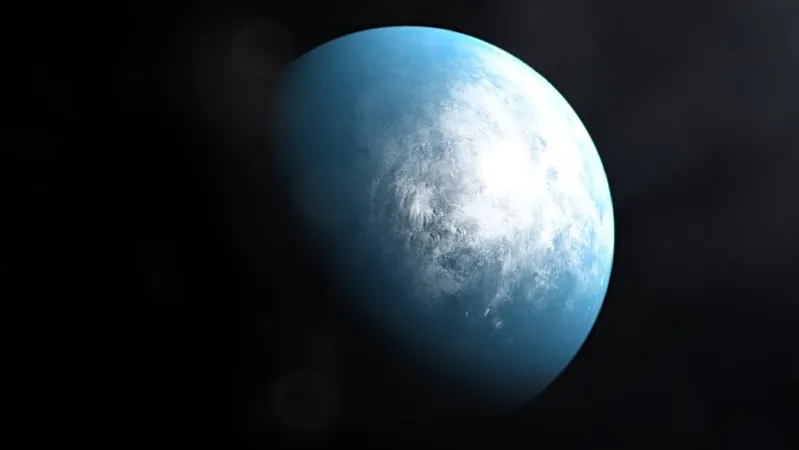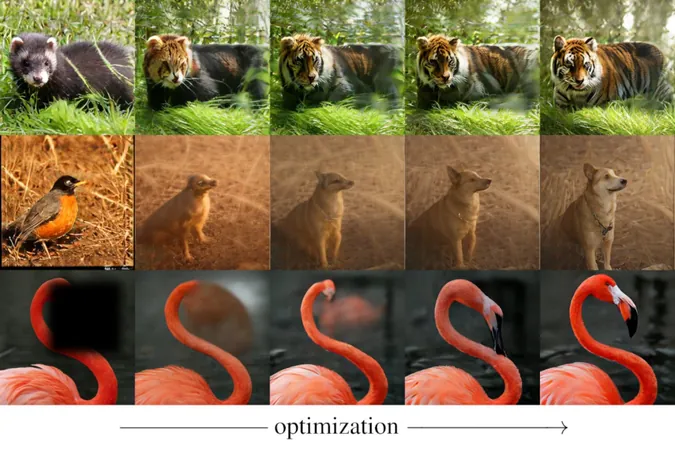
Unlocking the Secrets of Exoplanet Oceans: How the Habitable Worlds Observatory Could Change Everything
2025-07-09
Author: Jacob
The Quest for Water Beyond Earth
Water is the lifeblood of Earth, and it's the cornerstone of our search for extraterrestrial life. As scientists discover exoplanets orbiting distant stars, their first consideration is whether these planets lie in the 'habitable zone'—the sweet spot where liquid water could exist on the surface. This relentless quest for liquid water often eclipses other important searches, like identifying potential atmospheric biosignatures.
A Game-Changer: The Habitable Worlds Observatory
Enter the proposed Habitable Worlds Observatory (HWO)—a cutting-edge infrared/optical/ultraviolet space telescope aimed at pinpointing and characterizing potentially habitable exoplanets. With a mission to directly capture images of at least 25 of these worlds, the HWO represents a monumental leap forward in our cosmic investigation.
Detecting Liquid Water: A Key to Understanding Life
The Observatory isn't just about spotting planets; it also has the groundbreaking capability to detect surface water. In a recent study, lead author Nicolas Cowan from McGill University outlined how the HWO will utilize advanced techniques to uncover liquid bodies on exoplanets. As the authors state, "Planets hosting large bodies of water are favored environments for the evolution of life. Identifying these planets is one of HWO's primary goals."
The Science Behind Water Detection
How exactly will the HWO detect water? The secret lies in the distinctive way liquids reflect light. Unlike solids, liquids have smoother surfaces that create unique light signatures known as specular reflection. This phenomenon can make oceans appear dark from most angles but mirror-like when observed under the right conditions. The HWO aims to exploit these signatures to reveal large bodies of water as exoplanets rotate.
Unlocking Oceans on Tidally-Locked Worlds
Interestingly, many exoplanets orbiting red dwarfs are tidally locked, meaning they don’t rotate. For these worlds, the HWO can still detect oceans by analyzing variations in reflected light. While tracking an exoplanet’s surface features poses certain challenges, the fixed nature of these features could simplify the process of locating vast oceans.
Deciphering Earth-like Features from Afar
However, detecting exoplanet oceans is no simple task. The HWO will rely on precise timing and measurements to create rotational maps of exoplanets. Earth will serve as a case study, wherein adjustments must account for the nuances introduced by clouds and varying light conditions.
A Collaborative Effort in Exoplanet Research
If constructed, the HWO won't be working solo. The Extremely Large Telescope (ELT) and the proposed Large Interferometer For Exoplanets (LIFE) mission are also set to aid in the search for habitable terrains. While the HWO could provide definitive evidence of surface oceans, these other telescopes will complement its findings by analyzing climate-related features.
A Watershed Discovery Awaits
Discovering an ocean on an exoplanet is not merely a scientific milestone; it would revolutionize our understanding of life beyond Earth and the processes that enable water to reach distant planets. As the authors succinctly put it, "The potential to identify surface oceans is the very reason for the Habitable Worlds Observatory’s existence." The cosmos may soon yield unprecedented revelations!









 Brasil (PT)
Brasil (PT)
 Canada (EN)
Canada (EN)
 Chile (ES)
Chile (ES)
 Česko (CS)
Česko (CS)
 대한민국 (KO)
대한민국 (KO)
 España (ES)
España (ES)
 France (FR)
France (FR)
 Hong Kong (EN)
Hong Kong (EN)
 Italia (IT)
Italia (IT)
 日本 (JA)
日本 (JA)
 Magyarország (HU)
Magyarország (HU)
 Norge (NO)
Norge (NO)
 Polska (PL)
Polska (PL)
 Schweiz (DE)
Schweiz (DE)
 Singapore (EN)
Singapore (EN)
 Sverige (SV)
Sverige (SV)
 Suomi (FI)
Suomi (FI)
 Türkiye (TR)
Türkiye (TR)
 الإمارات العربية المتحدة (AR)
الإمارات العربية المتحدة (AR)